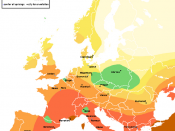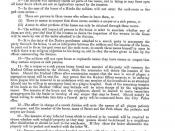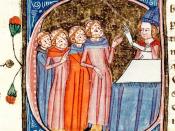The Bubonic Plague has proven to be one of the most devastating diseases ever known to man. The plague, also known as the Great Pestilence , ran rampant throughout Asia and Europe during the Middle Ages. The population of these affected peoples tried many different things to cure the illness, most to no avail. Though the causes were unknown at the time, there is now an understanding of what caused the disease and how to treat it. Through this paper, I will examine the cause of the disease, the signs and symptoms, the history of the plague through the Middle Ages, cures of yesterday, cures of today, and how likely it is that the plague will affect us again.
Part I: Middle Ages and the plague
History
Though there have been many plagues throughout the world and throughout time, such as the plagues that occurred in China in 224 BC and Egypt in 541 AD(6, NA), the primary focus of this paper are the plagues that occurred throughout Europe in the mid-fourteenth century, and again in the mid-seventeenth century .
The plague that occurred from 1348-51 is thought to have started in China and brought to the western world by Mongol troops. Some members of these troops had been infected when they marched into the city of trading city of Kaffa on the Crimea. The sickness compelled the forces to abandon their siege and, as a "parting shot" so to speak, the troops catapulted dead and dying soldiers over the walls of the city. Soon after the whole town was infected as were the European traders that were visiting. The frightened townspeople, seeing how their friends and relatives were dying, quickly fled the town by boat to seek refuge in Northern Italy. This is essentially how the plague...


